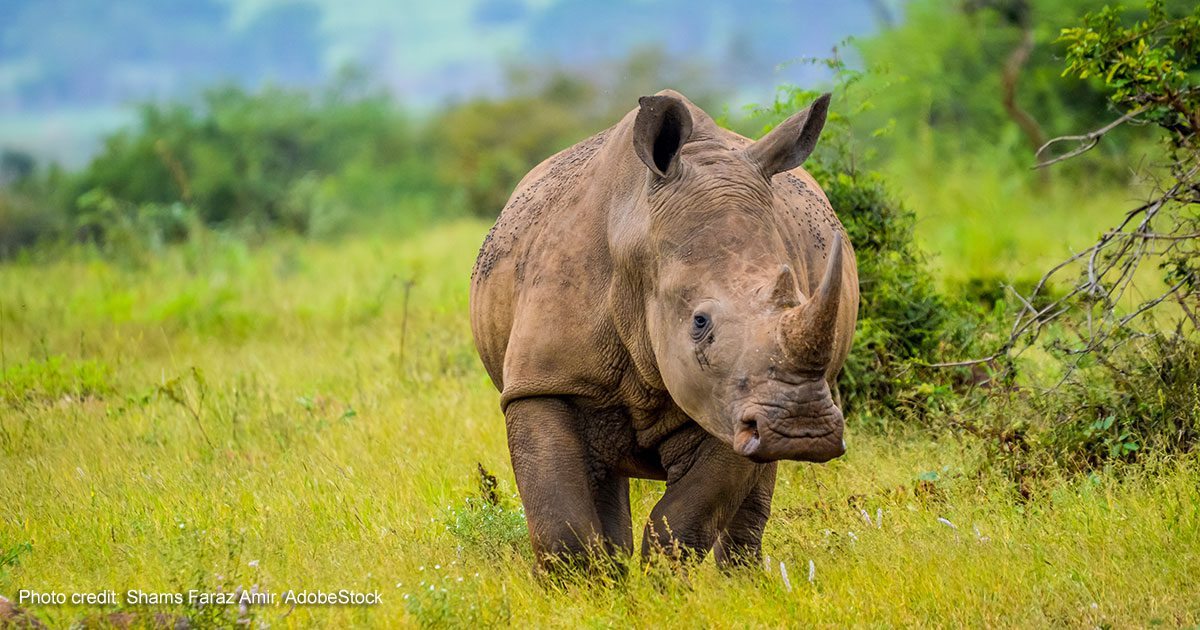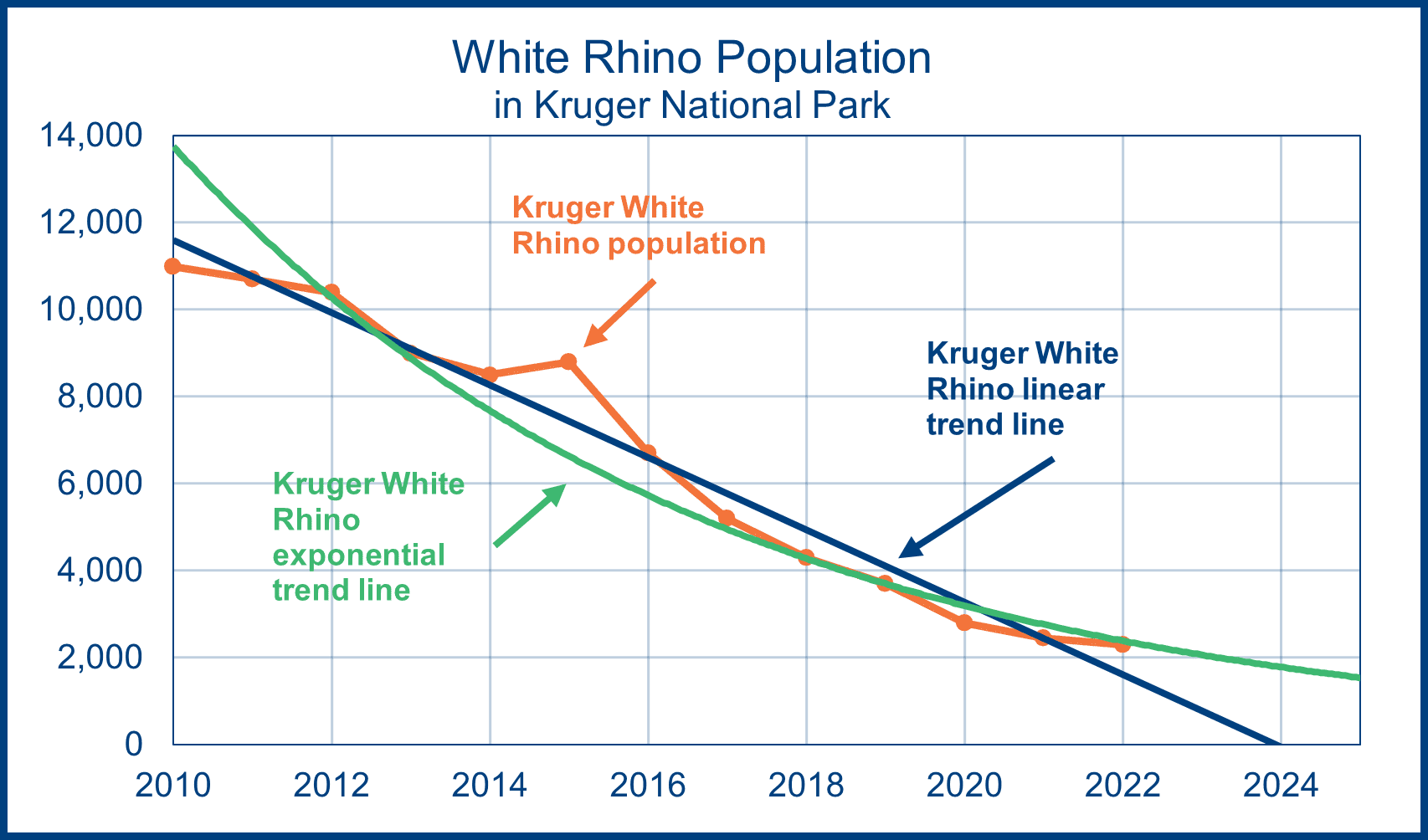
Feb 03, 2023 Rhino Conservation in Africa
The recovery of White Rhino populations in Africa (specifically South Africa) has been widely lauded as an exceptional conservation success, and the numbers support that claim. In 1895, only 20 white rhinos were left in Africa – all in the Hluhluwe Park (pronounced glugluey with a soft “g”) in Kwazulu-Natal, South Africa. Ian Player, brother of Gary Player, the South African golfer, was the architect of the white rhino recovery program. Today, there are an estimated 16,000 white rhinos in Africa, most of which (95+%) are in Southern Africa. The largest population of white rhinos is in the Kruger National Park (KNP) in South Africa, but the white rhino population trends in the KNP are declining (see graph).
Poaching in the KNP is the cause of the decline in KNP rhino populations, and white rhino numbers are on a trajectory to zero by 2024 (see blue linear trendline). However, the exponential (green) trendline shows a more likely outcome. As rhino numbers in the KNP decline, poached numbers will likely decline because rhinos will be harder to find. In addition, the KNP has recently established canine units to track and catch poachers. These canine units have proved to be very successful in reducing (deterring) poaching.
 A recent outcome of a poaching court case may further discourage poaching. A poacher sentenced to 11 years in prison for poaching a rhino appealed his sentence for being too harsh. But the appeals court not only upheld the ruling, it increased it to 15 years in prison, stating that the original sentence was too lenient because of the threat to rhino populations from poaching.
A recent outcome of a poaching court case may further discourage poaching. A poacher sentenced to 11 years in prison for poaching a rhino appealed his sentence for being too harsh. But the appeals court not only upheld the ruling, it increased it to 15 years in prison, stating that the original sentence was too lenient because of the threat to rhino populations from poaching.
The KNP has been a critical resource underpinning the growing populations of the Southern White Rhino. However, a recent academic paper reports that most white rhinos and a significant portion of black rhinos are now located on private lands.
In the past few decades, private and communal wildlife conservancies have emerged as a competitor to agriculture for land use in southern and eastern Africa. South African wildlife ranches cover at least 17% of the country, twice that of state-owned parks. Revenue from these conservancies is generated from wildlife-based tourism or the consumption of wildlife, including hunting for meat or trophies. However, national policies may limit revenue opportunities in other countries. Private landowners in South Africa have full ownership rights over the wildlife on their land. In contrast, landowner rights in Kenya are more limited, specifically for some consumptive uses (e.g., trophy hunting). The private ownership opportunities have also been extended to communal lands in some countries.
In 1989, when provincial parks in Natal (now Kwa-Zulu Natal) began selling rhinos at market value, it led to a surge in rhino populations on private land. By 1997, a fifth of Africa’s Southern White Rhino (1,785 out of 8,441 rhinos) lived on 163 private reserves (and conservancies) in South Africa. In 1997, the African Rhino Specialist Group identified three of eleven key white rhino populations and 18 of 33 important white rhino populations as being in private hands. While concerns have been raised about the durability and consistency of conservation efforts by private owners, private individuals have played an essential role in restoring white and black rhino populations in Africa.
Meanwhile, the costs of protecting rhinos from poachers have risen dramatically over the last few years. In 2017, the average property with rhinos spent $116,000 on security, increasing to $152,000 in 2021. Over the same period, the price of rhinos sold at auction dropped by 75%, indicating that investing in rhinos had become much less attractive to private landowners.
If one wants to see wild rhino living in what is primarily an unmanaged wilderness, then you are advised to book a trip to southern Africa soon. If current rhino population trends continue, then KNP will no longer be a destination where visitors can see all members of the big five (lion, leopard, rhino, elephant, and African buffalo).


